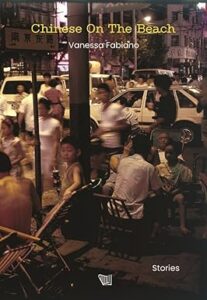In her 1944 essay “Writing of One’s Own”, Eileen Chang wrote “I do not like heroics. I like tragedy and, even better, desolation”. Twenty-one years earlier, in his speech “What happens after Nora leaves home?”, discussing the ending of Ibsen’s A Doll’s House, Lu Xun raised the awkward question of what will become of a woman after her liberation if she has no viable means to support herself materially.
China
Not as well-known as the classic poets of the Tang era, Xie Lingyun (385-433) stands at a turning point in Chinese literature. The long-ruling Han dynasty had a conservative view of culture. Scholars of that dynasty cultivated old fashioned poetic forms and adhered to a tradition-bound Confucian ethic. With the downfall of the Han and the centuries of warfare to restore a single Chinese polity, values, ideas, lineages and even geographic loci were stirred, as it were, in one great swirling pot.
A Swiss-Italian-Spanish author fluent in six languages (including English), Vanessa Fabiano first traveled to China more than thirty years ago and resided in Shanghai and Beijing around the time of SARS in the early 2000s. Her new collection of related stories, Chinese on the Beach, makes use of this timeframe, a period of growing friendships between Chinese and foreigners.
In Silk Roads, food writer Anna Ansari connects areas and cuisines not typically associated in English-language cookbooks, traveling from Beijing, to Baku in Azerbaijan. The closest author/chronicler would perhaps be Paula Wolfert, who is known for her Mediterranean cookbooks spanning France, Morocco, and the “eastern Mediterranean” to include Turkey. Ansari’s food memories originate from her ethnically Turkish family who left Iran and settled in the US.
That translator Dong Li calls Chinese poet Ye Hui “metaphysical” in his introduction to The Ruins—a characterisation repeated in the book’s marketing material—might seem challenging, but in the fact the poems, while not exactly straightforward or immediately obvious, are—for most part—eminently accessible and interesting.

A nascent media mogul battling for political survival, a love triangle fractured by the SARS pandemic, the ruthless choreography of Shanghai’s social scene—each story in Chinese on the Beach explores the particular madness of living through history, when old rules dissolved overnight and new ones hadn’t yet formed.
Regardless of culture, mother-daughter relationships can be fraught and tensions incomprehensibly continue to be passed down generation after generation. Gish Jen addresses her own contentious relationship with her mother in her new novel, Bad Bad Girl, her tenth book and the first she’s devoted to her mother.
If one ever forgets what poetry is for, this newly-released collection is a reminder of its ability to renew, sooth and provoke. Mirror is a translation of a lengthy posthumous selection of Chinese poet Zhang Zao’s lifelong opus.
Qing Yuan works in a morgue, cleaning bodies. He grew up in a cultured family before 1949, studying art and literature in university. Qing Yuan’s father owned a jewelry shop and got into trouble with the new government after he tried to hide a small amount of gold during the early days of nationalization. Qing Yuan was punished for his father’s capitalist ways and when Ruyan Meng’s novel opens in 1966, he’s been the morgue keeper of the title for sixteen years.
From a general historical perspective, the current confrontation between mainland China and Taiwan is not difficult to explain. By the end of the 19th century, Qing Dynasty was teetering on the brink of collapse. Territories were carved out and handed over to foreign colonizers after failed battles. Taiwan was ceded to the Empire of Japan in 1895.

You must be logged in to post a comment.